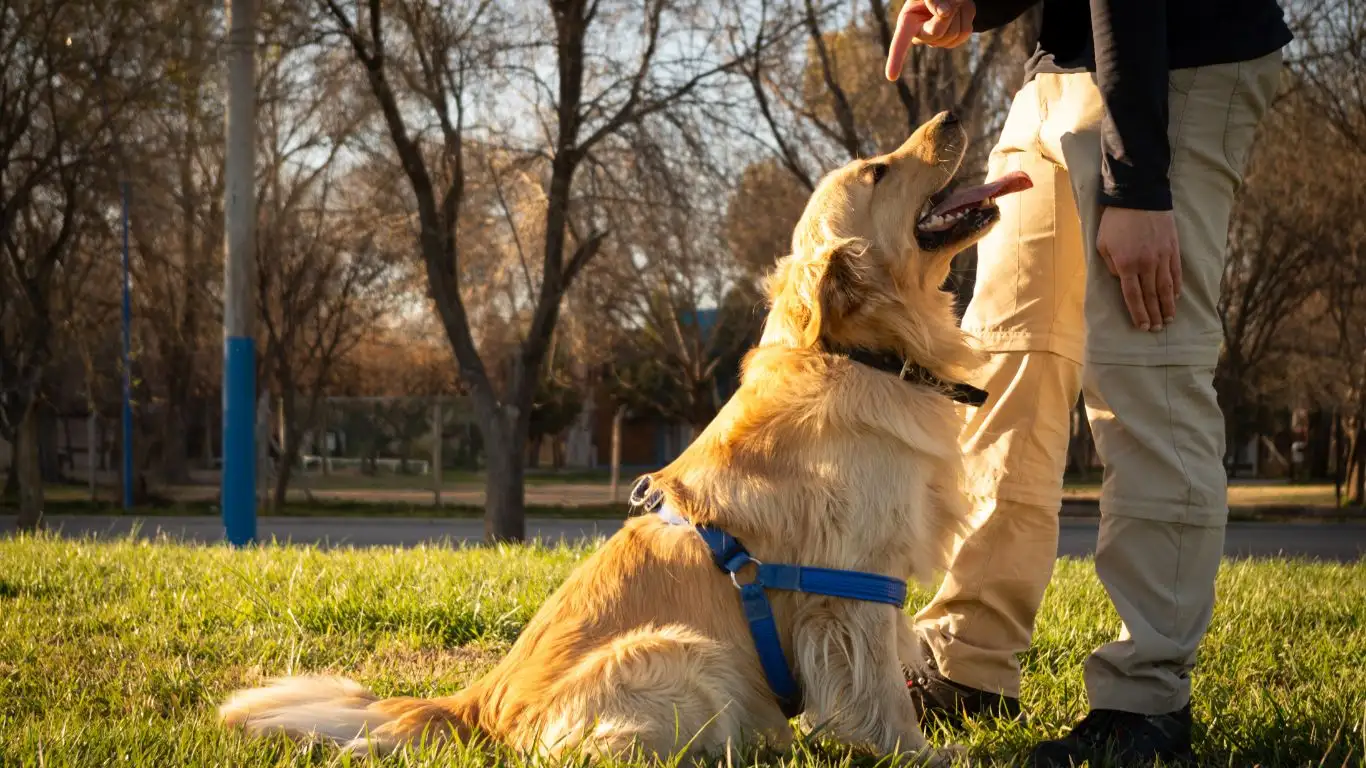How to Train a Dog to Stop Barking at Delivery People – Effective Tips
As a Canine-Assisted Therapy Trainer, I’ve seen it all when it comes to dogs’ behavior, from playful pups to anxious furballs. But one behavior that many dog owners struggle with is excessive barking—especially when the doorbell rings or the mailman arrives. If you’ve ever asked yourself, “How do I train my dog to stop barking at delivery people?” you’re not alone. It’s a common issue that can be both frustrating and embarrassing, but it is absolutely something that can be addressed with the right approach. In this article, I’ll walk you through the steps I’ve learned through my own experience with training dogs, including techniques that I’ve found most effective to reduce or eliminate that disruptive barking habit.
Understanding Why Your Dog Barks at Delivery People
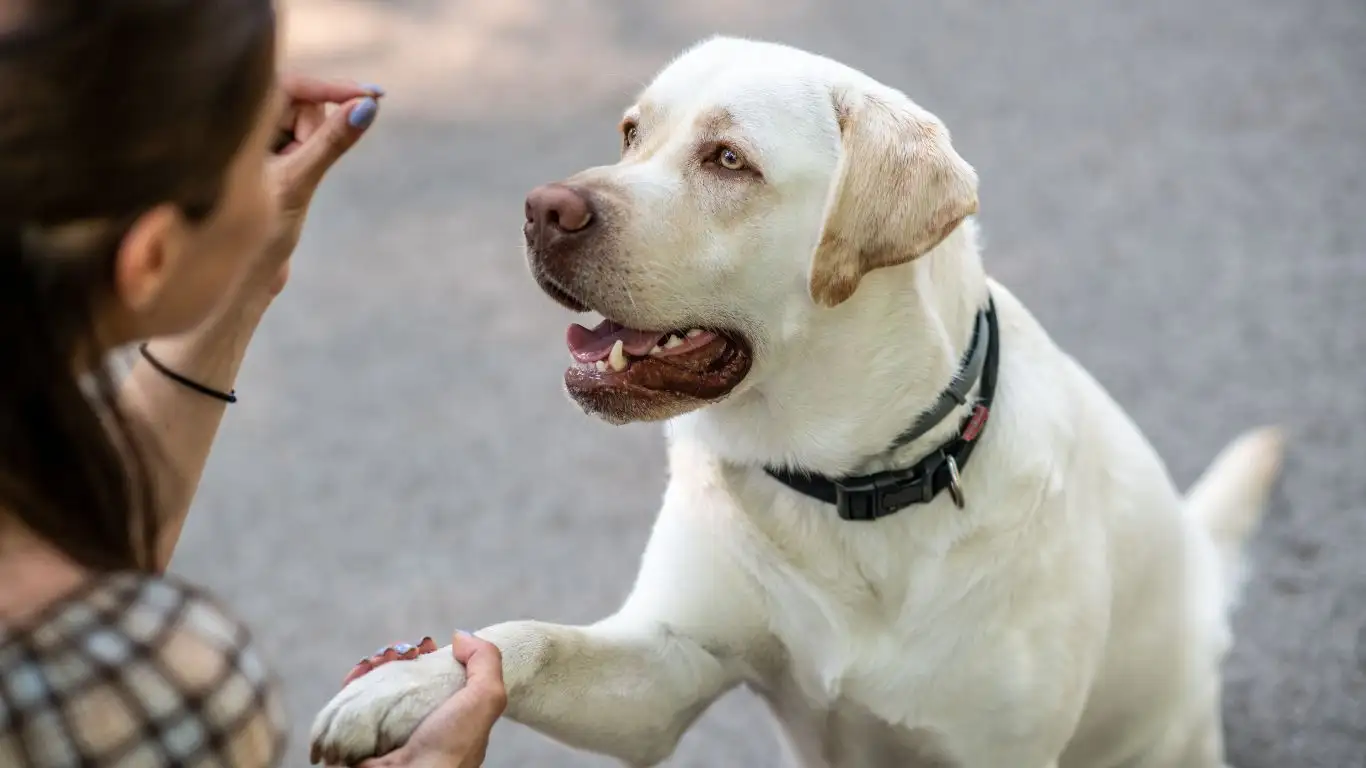
First things first: understanding why your dog barks at delivery people is crucial. Dogs bark for various reasons, but when it comes to delivery people, it’s often a mix of excitement, territorial behavior, and a little bit of fear. Let’s break it down a bit further:
- Excitement: For some dogs, a knock at the door or the sound of the delivery truck is an exciting event. They might get overly excited and bark out of enthusiasm.
- Territorial Instincts: Dogs are naturally territorial animals, and the arrival of a stranger (like a delivery person) on their turf can trigger a protective response. They feel the need to guard their home.
- Fear or Anxiety: Other dogs might bark because they’re unsure about the person or the situation. The sound of a truck pulling up, the ringing doorbell, and the appearance of an unfamiliar face can cause anxiety for some dogs.
In my experience, figuring out the root cause of the barking is key to addressing it properly. The solution that works best will vary depending on whether your dog is excited, anxious, or territorial. Once you have a better understanding of why your dog is barking, you can start using training methods to change the behavior.
1. Setting Up a Safe, Calm Environment

One of the first things I recommend to any dog owner struggling with this issue is to create a calm, controlled environment before the delivery person even arrives. This may sound simple, but it’s one of the most effective ways to prevent your dog from getting into an excited or anxious state in the first place. Here’s how you can do it:
- Practice a Quiet Space: Start by teaching your dog to settle down in a designated quiet area, like a crate or a cozy spot in the house. Reward them for staying calm and quiet in this spot, especially when there’s no delivery person around.
- Use Background Noise: If you know a delivery is coming, try playing calming music or white noise to drown out any unfamiliar sounds like the delivery truck or the doorbell. Over time, this can help desensitize your dog to these noises.
- Prepare with Routine: Dogs thrive on routine, so try to keep the environment calm by sticking to a regular schedule for meals, walks, and training sessions. When your dog feels confident in their routine, they’re less likely to react to disruptions like a delivery person.
Creating a controlled, calm environment isn’t an immediate fix, but it can go a long way in reducing anxiety and excitement. And with consistency, your dog will begin to associate the doorbell or knocking with calm behavior rather than barking.
2. Teach an Alternative Behavior
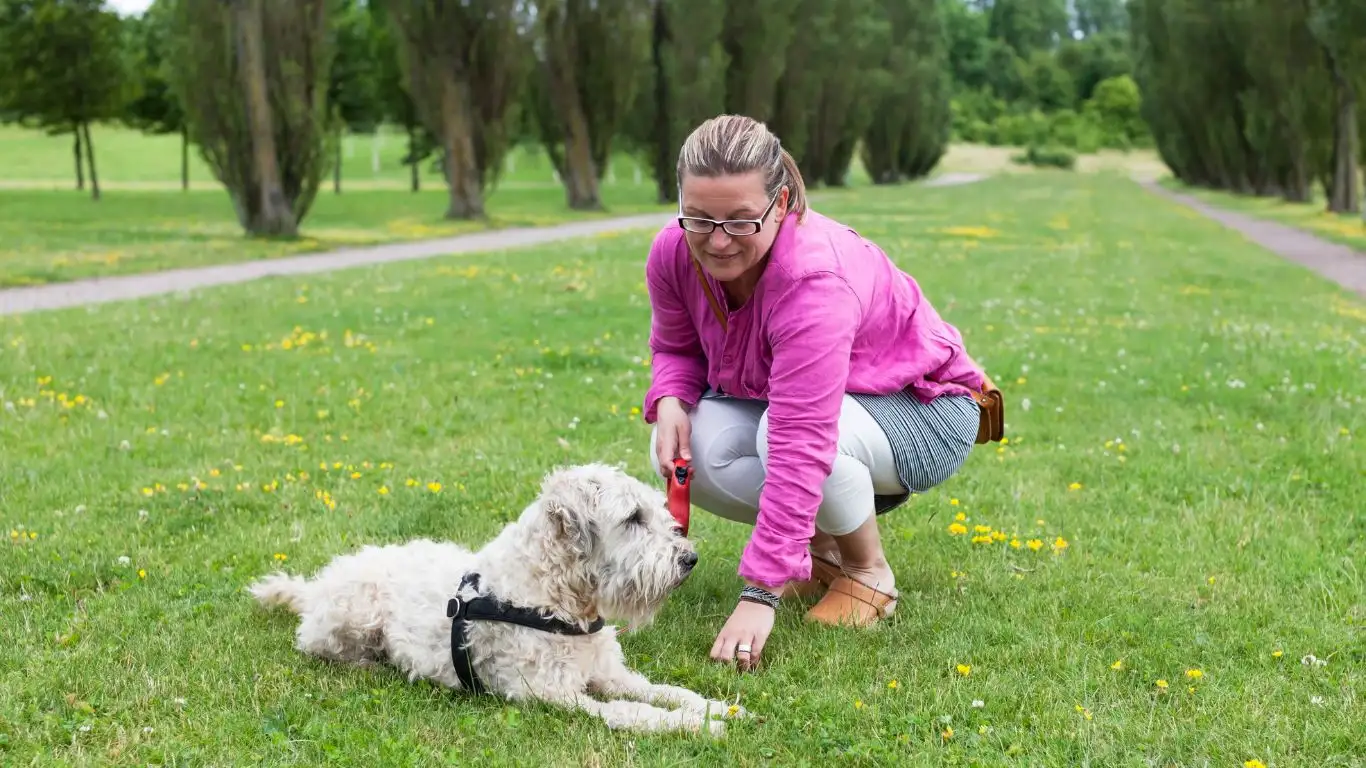
Instead of just trying to stop the barking, another technique that has worked wonders for many of my clients is teaching their dog an alternative behavior. For example, when your dog hears the doorbell, instead of barking, they could be trained to go to a specific spot, like their bed or a mat. Here’s how you can get started:
- Introduce the “Go to Your Spot” Command: Start by teaching your dog to go to their spot (bed, mat, or crate) on command. You can do this by leading them to the spot with treats or using a leash, and once they’re there, reward them with praise and treats.
- Pairing with a Trigger: Once your dog understands the “go to your spot” command, pair it with the sound of the doorbell or a knock. When the doorbell rings, immediately give the “go to your spot” command. Over time, your dog will learn to associate the doorbell with this calm behavior instead of barking.
- Consistency is Key: Like all training, consistency is essential. Keep practicing this behavior, and soon, your dog will naturally go to their spot every time the doorbell rings.
This alternative behavior will not only help reduce the barking but will also help your dog remain calm and confident around delivery people. It’s a great way to replace the unwanted behavior with a more desirable one.
3. Reward Calm Behavior
Positive reinforcement is one of the most effective training tools. If your dog shows calm behavior when the delivery person arrives—whether they’re staying in their spot, quietly observing, or simply not barking—make sure to reward them with praise, treats, or playtime. Here’s why this is important:
- Reinforces Positive Behavior: By rewarding calm behavior, you’re reinforcing the idea that being quiet around delivery people leads to positive outcomes.
- Helps Build Confidence: Praise and rewards help build your dog’s confidence and understanding that calmness leads to good things, making them more likely to continue the behavior.
- Prevents Reinforcing Barking: Never reward your dog when they bark excessively at delivery people. Doing so will only teach them that barking gets attention, which could make the problem worse.
One thing I’ve noticed over the years is that owners who stay consistent with rewards tend to have the best success in curbing barking at delivery people. This process doesn’t happen overnight, but with patience and consistency, you’ll see great progress.
4. Desensitize Your Dog to the Sound of the Doorbell
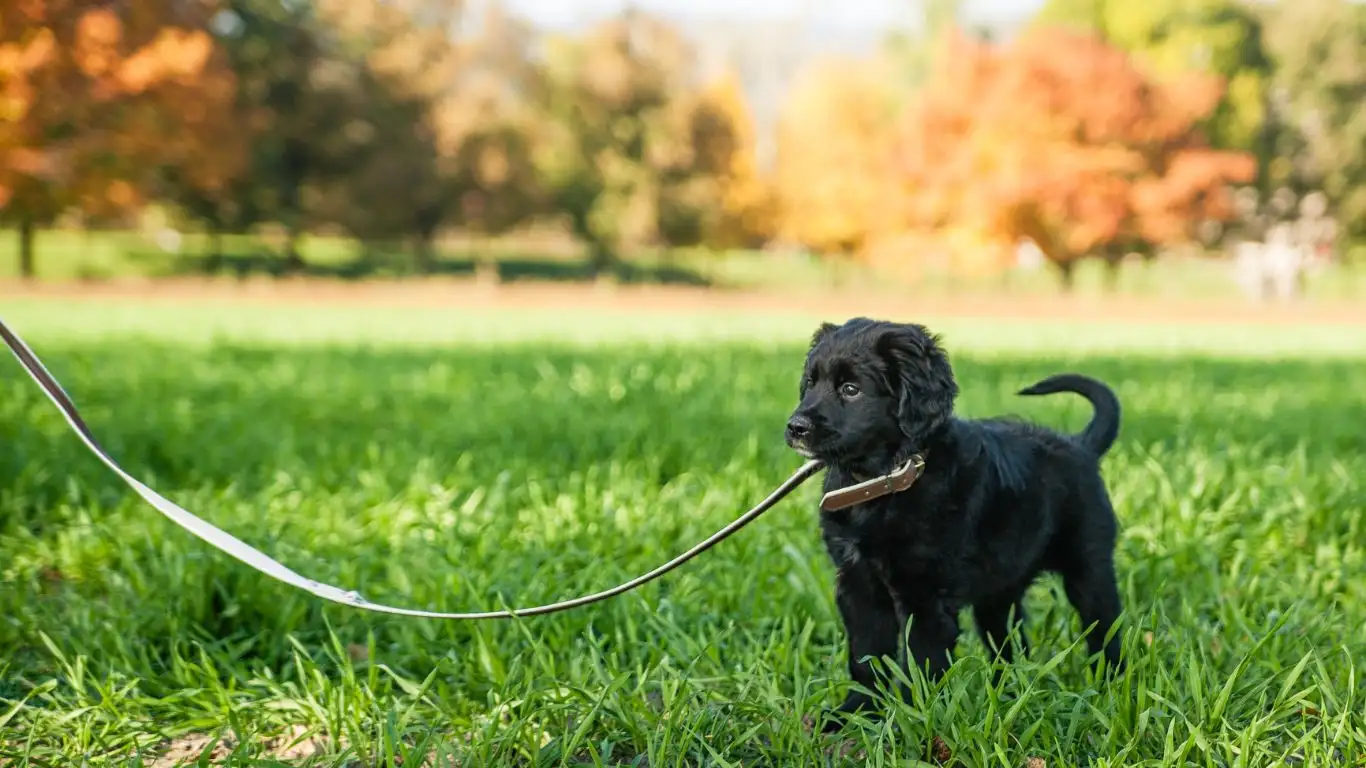
One of the most common triggers for barking is the sound of the doorbell or knocking on the door. Over time, many dogs develop a conditioned response to these sounds, which sets off their barking. One of the most effective ways to stop this is through desensitization. The goal is to gradually reduce your dog’s sensitivity to the sound of the doorbell, so they no longer feel the need to bark every time it rings.
Here’s how you can desensitize your dog to the doorbell:
- Start Slowly: Begin by ringing the doorbell at a low volume or having someone knock on the door at a very low intensity. At first, your dog may still react, but it’s important to remain calm and not overreact to their behavior.
- Reward Calm Behavior: If your dog remains calm, reward them immediately with praise or a treat. This reinforces the behavior you want to see. If they start barking, wait until they stop and then reward them.
- Increase Intensity Gradually: As your dog gets used to the sound, slowly increase the volume or frequency of the doorbell sound. Continue rewarding them for calm behavior and be patient during the process.
Desensitization works because it helps your dog realize that the doorbell is not a threat. With practice, they’ll learn that the doorbell ringing doesn’t automatically mean it’s time to bark.
5. Use a “Quiet” Command
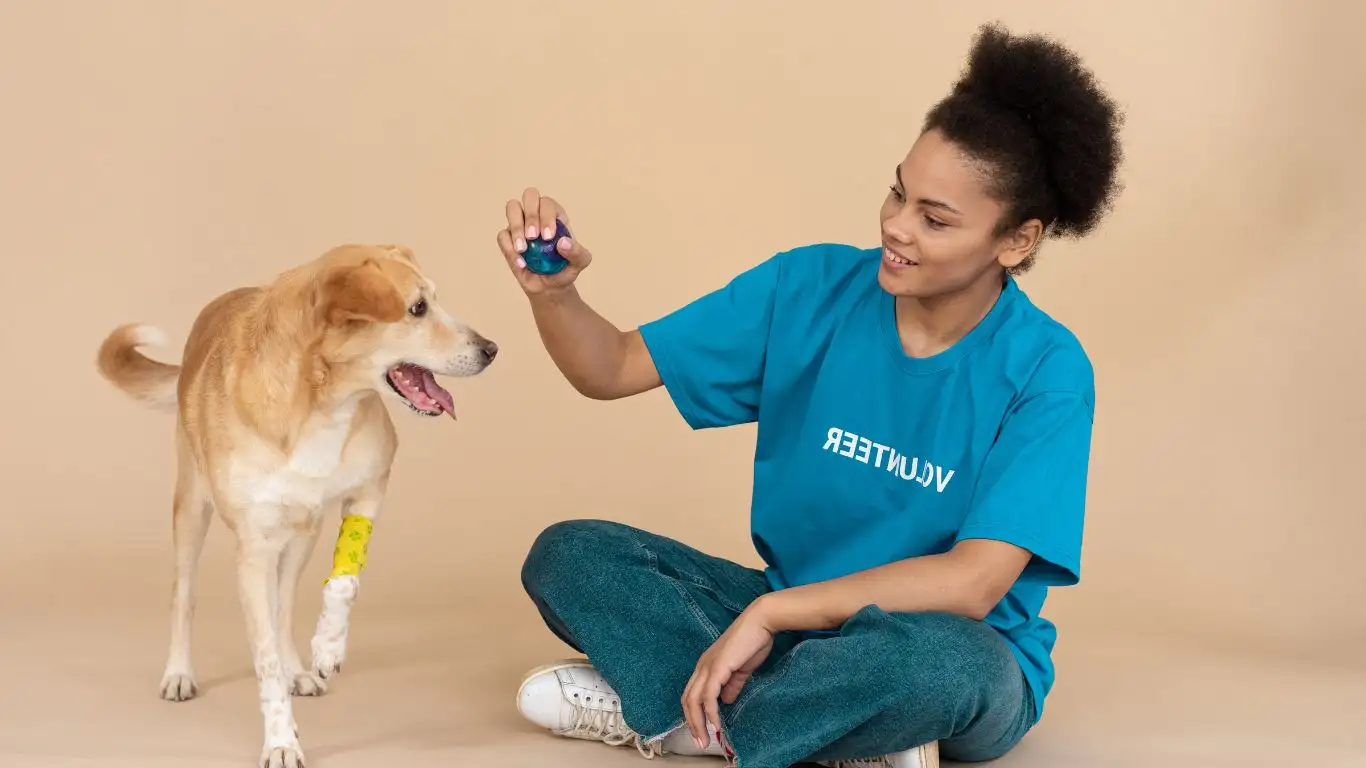
Another command I often recommend to clients who are struggling with their dog’s barking behavior is teaching a “quiet” command. This command is particularly helpful in situations where your dog is already barking, and you need them to stop immediately. When taught properly, this command can be a powerful tool in getting your dog to settle down on command.
Here’s how to introduce the “quiet” command to your dog:
- Wait for Your Dog to Bark: First, allow your dog to bark at the delivery person or the doorbell. Once your dog is barking, calmly give the “quiet” command.
- Wait for Silence: Don’t say anything else until your dog stops barking. When they stop, even for just a moment, immediately reward them with a treat or praise.
- Repeat and Reinforce: Keep practicing this command until your dog consistently responds to “quiet” by stopping barking. Be sure to reward them each time they obey, and gradually increase the duration of silence required before you reward them.
The key here is consistency. Over time, your dog will begin to associate the “quiet” command with stopping barking, especially when delivery people arrive. It’s also crucial to remain calm and avoid scolding your dog when they bark—this can lead to confusion and anxiety.
6. Redirect Your Dog’s Focus

Redirecting your dog’s focus is another fantastic method that I use to help stop barking at delivery people. When your dog starts to bark, instead of simply trying to quiet them down, redirect their attention to something more positive and constructive. This technique works particularly well with dogs who tend to get overly excited or have trouble calming themselves down during these situations.
Here are some steps to successfully redirect your dog’s focus:
- Use a Favorite Toy: When the barking starts, grab your dog’s favorite toy or something that captures their attention, like a chew or a puzzle feeder. Start playing with them or encourage them to engage with the toy, making it more interesting than the delivery person outside.
- Offer a Training Session: If your dog is in a particularly barking mood, you can redirect their attention by starting a quick training session. For example, practice basic commands like “sit,” “stay,” or “come.” This gives your dog something positive to focus on rather than the delivery person.
- Positive Reinforcement: Every time your dog redirects their attention away from the delivery person to the toy or training activity, reward them with treats or praise. The more you reinforce this, the more likely they are to switch their focus away from barking in the future.
Redirecting your dog’s attention not only prevents barking but also strengthens their bond with you. Plus, it turns what could be an annoying situation into an opportunity for fun and learning.
7. Training and Socialization Beyond the Door
While we’ve focused a lot on managing barking at the door or around delivery people, it’s important to remember that overall training and socialization play a huge role in your dog’s behavior. Dogs who are well-socialized and have basic obedience skills are generally more relaxed and less reactive to new experiences, including delivery people.
Here’s how you can improve your dog’s overall training and socialization:
- Exposure to New People: Make sure your dog is regularly exposed to new people and environments. Take them on walks, visit pet-friendly parks, and invite friends over to your home. This helps them get used to strangers and reduces anxiety about unexpected visitors, including delivery personnel.
- Basic Obedience Training: Regular training sessions are a must. Commands like “sit,” “stay,” and “down” can be invaluable when it comes to redirecting your dog’s attention. Practice these commands regularly so that your dog learns to listen even when they’re excited or distracted.
- Positive Socialization: If your dog has fear-based reactions to delivery people, consider enlisting the help of a professional dog trainer who specializes in fear-based behaviors. Sometimes, these behaviors need to be addressed through careful, gradual exposure to various triggers, which a trainer can guide you through.
Ultimately, training your dog to stop barking at delivery people requires a combination of patience, consistency, and positive reinforcement. By setting up the right environment, teaching alternative behaviors, and staying calm and consistent, you’ll see significant improvements in your dog’s behavior over time. And don’t forget to celebrate those little victories along the way!
8. Using Distractions to Prevent Excessive Barking
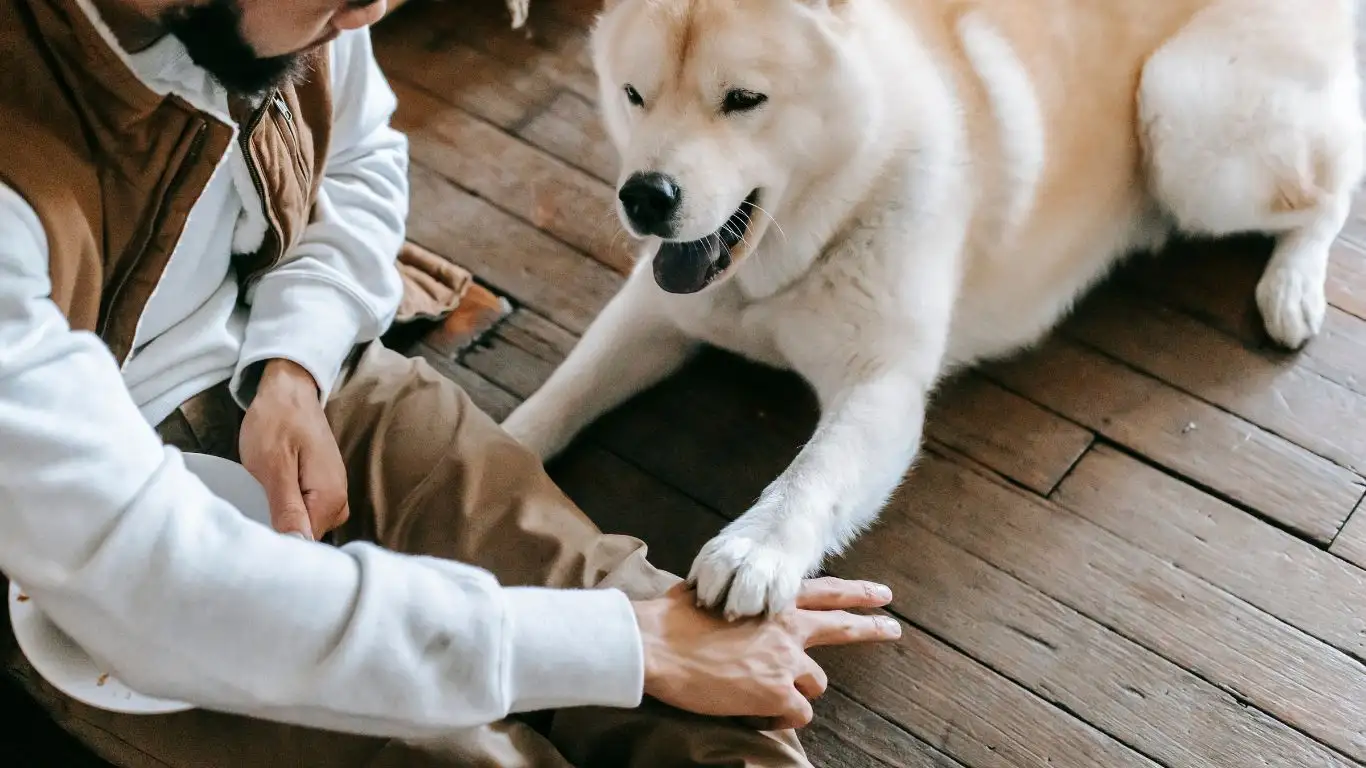
If your dog has developed a strong habit of barking at delivery people, one useful method is to incorporate distractions to prevent the barking before it even starts. Distractions can redirect your dog’s attention from the delivery person and toward something more engaging, effectively breaking their focus on the situation. Distractions can be especially effective if your dog is motivated by food, toys, or playtime.
Here are some of the best distractions you can use to prevent excessive barking:
- Treat-Dispensing Toys: These toys can keep your dog entertained for extended periods of time. When you know a delivery is about to arrive, fill the toy with treats or peanut butter and give it to your dog to enjoy while the delivery happens. The distraction will keep them focused on the toy rather than the situation.
- Interactive Games: If your dog enjoys playing, a quick game of fetch or tug-of-war just before the delivery person arrives can help burn off some energy and keep them calm. A quick game can distract them just long enough to prevent them from barking when the doorbell rings.
- Food Puzzle Toys: Food puzzles require your dog to work for their treats, keeping them mentally engaged. You can use these puzzles as a proactive tool to redirect your dog’s focus, which can prevent the barking and provide mental stimulation at the same time.
Using distractions requires a bit of timing, but when you can anticipate the situation, they can work wonders in preventing the barking altogether. I’ve found that using distractions, especially treat-based ones, helps keep dogs occupied and far less likely to bark excessively.
9. Leash Training for Greater Control
If your dog’s barking at delivery people continues to be a persistent issue, it might help to work on leash training as well. Leash training can provide you with more control over your dog’s actions and can help stop the barking by guiding them away from the door or other areas that trigger their reaction.
Here’s how to use leash training to manage barking at delivery people:
- Start with Basic Leash Training: Before you focus on barking, ensure that your dog is comfortable walking on a leash. This may seem basic, but many dogs find it challenging to walk calmly on a leash. Once your dog is comfortable with basic leash training, you can use the leash to guide their behavior during training sessions.
- Redirect with the Leash: When your dog begins barking at the delivery person, calmly lead them away from the door and guide them to a quiet area of the house. Reward them for remaining calm in their new location. Leash training gives you better control to prevent your dog from running to the door to bark.
- Gradual Exposure with the Leash: After your dog becomes accustomed to the leash, gradually expose them to delivery scenarios while on the leash. Start by ringing the doorbell yourself and using the leash to prevent any excessive movement or barking. With enough practice, your dog will begin to associate the doorbell with calm behavior and the presence of the leash.
Leash training can be a game-changer when it comes to controlling your dog’s barking, especially if you’re trying to break a habit that has been built up over time. It provides you with better control and guidance, so your dog learns how to remain calm in all kinds of situations.
10. Professional Help: When to Consult a Trainer
While many of the methods mentioned above are effective, some dogs may need extra help from a professional dog trainer, especially if their barking is linked to deeper behavioral issues like fear or anxiety. If you’ve tried multiple strategies and still find that your dog is excessively barking at delivery people, it might be time to reach out for professional assistance.
Professional trainers are skilled in handling a wide range of behavior problems and can work with you to create a personalized training plan for your dog. Here are some scenarios when it might be time to consult a professional:
- Fear-Based Barking: If your dog’s barking is based on fear (such as fear of strangers or loud noises), a trainer can help with desensitization techniques that require a deeper understanding of canine behavior.
- Excessive Anxiety: Dogs with separation anxiety or generalized anxiety may benefit from working with a professional trainer who specializes in anxiety-related behaviors.
- Reinforcing Good Behavior: A trainer can also help you reinforce the positive behaviors you’ve been working on and offer additional techniques for controlling barking and other unwanted behaviors.
When choosing a professional trainer, look for someone who uses positive reinforcement methods, which are more effective and gentle than punishment-based techniques. You can also check out reputable organizations like the American Kennel Club or the PetMD for tips on finding certified trainers near you.
11. Being Patient and Consistent
It’s important to remember that training takes time, and every dog is different. Some dogs might take a few days to learn a new behavior, while others may need weeks or even months to fully adjust. Patience and consistency are your best friends throughout this process. When your dog starts to get it—when they finally stop barking when the delivery person arrives—it’s such a rewarding feeling!
In my own experience as a Canine-Assisted Therapy Trainer, the most successful training sessions I’ve seen have involved owners who were consistent with their approach and didn’t give up, even when progress seemed slow. Keep rewarding the behavior you want to see, and be patient with your dog as they learn new skills.
References
Disclaimer
The information provided in this article is intended for general guidance. It is not meant to replace professional advice from a veterinarian or certified dog trainer. Every dog is unique, and behavior modification techniques should be tailored to your pet’s individual needs. Consult a professional trainer or behaviorist if you have concerns about your dog’s behavior or need personalized guidance.
